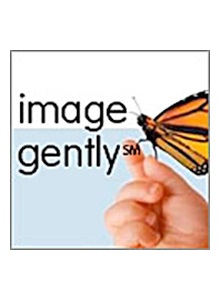RULES AND REGULATIONS FOR THE NCSRT, INC. SCIENTIFIC PAPERS
I. CATEGORIES FOR SUBMISSION - The subject matter will be from the radiologic sciences in the following categories:
- INTEGRATED REVIEW OF LITERATURE PAPER
- PRIMARY RESEARCH PAPER
II. DEADLINE FOR SUBMISSION - All manuscripts and paper application forms to be considered must be received by a date set yearly based on committee and board input. The manuscripts will be sent to the Chairperson of the Scientific Paper Committee.
February 07, 2025
III. ELIGIBILITY - Technologists, advanced students, or student members holding active membership will be allowed to participate. Membership will be based on records, paper application information, and the decision of the Scientific Paper Committee. The President and Scientific Paper Committee members will be exempt from competing. There will be no more than two authors for any paper submitted for competition.
IV. DESCRIPTION OF CATEGORIES FOR SUBMISSION
Category 1: Integrated Review of Literature- An Integrated Review of Literature paper demonstrates the writer’s ability to research the work of numerous authors in review of a particular topic. The goal is to develop a comprehensive review of what numerous authors say about a particular topic. The writer must research literature from various authors and synthesize an original explanation about the topic. The writer must not present facts in the manner of a book report. Instead, the writer must be able to present all authors’ views in a collective manner, linking common ideas, thoughts, and/or differences among the authors.
Category 2: Primary Research- Papers should present a hypothesis or problem to be researched through experimentation/data collection and statements of results. Supporting literature can enhance the development and proof of the hypothesis stated.
V. FORMAT- Author(s) are required to use the reference style that is specified in the American Psychological Association (APA), American Medical Association (AMA), or Modern Language Association (MLA) Manual of Style.
Below are suggested pages/headings for your paper:
A. Title Page
The purpose of the Title Page is to provide necessary information for communication from the committee. The title would be helpful for the judges also. The copies sent to the judges are not to be labeled with authors’ names, addresses, or institutions.
- Title of the Manuscript (on all 4 copies)
- Division and Category of Competition (on all 4 copies)
- Name of the institution and author(s), address and telephone number of the author(s) (on the single identified copy only)
B. Abstract Page
- The purpose of the Abstract Page is to summarize significant information contained in the paper. It is recommended to write the abstract page after the paper has been completed.
- Limited to 75 words
- Should relay the essence of the paper
C. Formatting
Categories should follow the main sections of the paper. Online resources should be utilized to ensure proper format per APA, AMA or MLA format is followed when constructing your paper.
Integrated Review of Literature will include:
- Introduction
- Review of Literature/Methods and Materials
- Discussion/Results
- Case Studies (if applicable)
- Implications for Practice
- Conclusion or Summary
- References
Primary Research Paper will include:
- Introduction
- Methods/Materials
- Discussion/Results
- Case Studies (if applicable)
- Implications for Practice
- Findings
- Conclusion or Summary
- References
D. Content of Paper Sections
- Introduction: The purpose of the Introduction is to provide a brief description and background to the paper.
- Integrated Review of Literature/Methods and Materials: The purpose of this section is to provide the plan for either research or literature review.
- Discussion: The purpose of this section is to provide the writer a place to present data, results, or current information in an organized sequence. It is appropriate to include case studies in this section, or to present them separately.
- Case Studies: Case studies are optional, but should support information given in the Discussion section of the paper. They may also be a separate section if desired.
- Conclusion/Summary: The purpose of this section is to provide details of the results and limitations of the author’s research.
- References: The purpose of this section is to give credit to the sources used in the paper. Credit must be given both within and at the end of the text.
JUDGING
- The Scientific Paper Committee is responsible for evaluation and judging of all submissions (see Scientific Paper Committee guiding principles for committee responsibilities)
- The manuscripts remain the property of the Society until after the results are tabulated.
- Active membership status will be checked. Any author(s) not a member at the time of the application will be automatically disqualified
- Judging of the manuscripts will be final.
- Judging of the manuscripts will be according to the scale that follows below. To qualify for first or second place, an average minimum score of 60 points must be received on the paper.
- By permission of the author(s), winning papers will be forwarded to the web liaison for possible web posting.
1. JUDGING SCALE
a. Educational or Technical Value
Does the material presented promote or advance the knowledge of technology? Will the paper be of value within the disciplines of diagnostic, therapy, nuclear medicine, radiology management, etc., regardless of the technologist’s, therapist’s, or student’s length of time or experience in the field?
Scale | Point Value |
Knowledge Greatly Increased | 30 |
Knowledge Somewhat Increased | 24 |
No New Knowledge Gained | 10 |
b. Development of Content
Was the thesis/hypothesis appropriately developed through the paper’s content and discussion? Was sufficient effort given to individual investigation and research?
Scale | Point Value | |
Fully Developed Thesis/Hypothesis | 20 |
|
Acceptable Development | 14 |
|
Limited Development of Content | 9 |
|
c. Application of Technology
Does knowledge gained from this research have clear application to a radiologic specialty? As a result, is the knowledge presented of use in the daily tasks of the technologist, therapist, or student?
Scale |
Point Value | |
Broad Application | 20 |
|
Limited Application | 14 |
|
No Clear Application | 9 |
|
d. Organization of Material
Is the text self-explanatory? Are data, charts, graphs or other illustrations that are presented helpful in clarifying the text? A text should not be penalized if illustrations are not supplied, providing the text is self-explanatory.
Scale | Point Value | ||
Promotes Clear Understanding | 10 |
| |
Acceptable Level of Understanding | 5 |
| |
Overall Unclear | 0 |
| |
|
|
|
|
e. Mechanics
Does the paper use correct grammar and spelling? Is the paper neat in appearance? Is an acceptable documentation form followed (including a bibliography and reference list)?
Scale | Point Value | ||
Superior | 10 |
| |
Acceptable | 5 |
| |
Needs Major Improvement | 0 |
| |
J. ILLUSTRATIONS/TABLES/FIGURES
- Illustrations/tables/figures are not mandatory. If they are needed to further explain the text, they must be supplied for all copies.
- Illustrations/tables/figures should carry no mark or identification of the author or source, i.e., no hospital identification, patient name or number. Illustrations, identification, patient name or number. Illustrations, charts, diagrams, etc., utilized from other sources should be appropriately referenced with permission from the appropriate source.
- All illustrations/tables/figures must be placed at the end of the paper.
- Captions may appear on the same page as the illustration/table/figure if size permits. When many illustrations/tables/figures are used or size does not permit captions are all on one page.
- Any human subjects used for this purpose must not be identifiable.
- Tables must be double-spaced. The title and table number must be flush left.
- Abbreviations used must be explained at the bottom in a footnote.
K. MANUSCRIPT GUIDELINES-The following guidelines should be closely followed:
- Manuscripts must be typed, double-spaced, on white 8 1/2 x 11-inch paper on one side only.
- All papers must have a 1 1/2” margin on all sides.
- Length of manuscript may vary, not over 1500 words.
- Four copies must be submitted: three unidentified and one identified copy. During the judging process the identified papers will remain with the Committee Chair.
- The manuscript must be original with the author and cannot have been published or accepted for publication prior to entry.
L. NOTIFICATION
- Any author whose paper is disqualified will be notified via email, after the decision is made by the Committee.
- Thirty days prior to the Annual Conference all placing authors will be notified via email.
M. PRIZES
Following the judging, two qualifying manuscripts from each category in each division will be selected. Awards will be presented at a specified time during the Annual Conference. Awards will be given for Staff, Advanced Student, and Student Divisions in the following categories:
Category 1: Integrated Review of Literature
First and Second Place
Category 2: Primary Research Paper
First and Second Place
You must email your paper and application to
Amie Sasser, sassera@edgecombe.edu




